
Windows 10 is great; if you’re on a Windows 7 or 8 PC, there’s virtually no reason not to upgrade.
That said, there are so many new features and settings that sorting through them all can become overwhelming, and you could be missing out on making the most of your Windows 10 experience.
That said, there are so many new features and settings that sorting through them all can become overwhelming, and you could be missing out on making the most of your Windows 10 experience.
Don’t worry though; TNW’s got your back. We’ve been running the OS since the original Insider builds, so here are some of our top tips to get the most out of Microsoft’s latest:
Make the Start Menu as big as you want
The classic Start Menu is back and better than ever, mixing the best of Windows 7 and Windows 8 with some new tricks up its sleeve too. You can now drag the edges of the menu around to resize it to your heart’s content.

There’s also a neat little shortcut for accessing all your apps more easily; drag upwards on the left side of the menu with either your mouse or your finger and the full list of apps will appear. You can also click on any letter to navigate to apps starting with another letter quickly.
Use tablet mode even if you don’t have a touchscreen
Aside from a full screen Start Menu, tablet mode makes all apps default to being maximized, removes your taskbar icons, and only leaves essential notification tray items. If you want to switch apps, you have to use task view, Alt+Tab or open them manually.
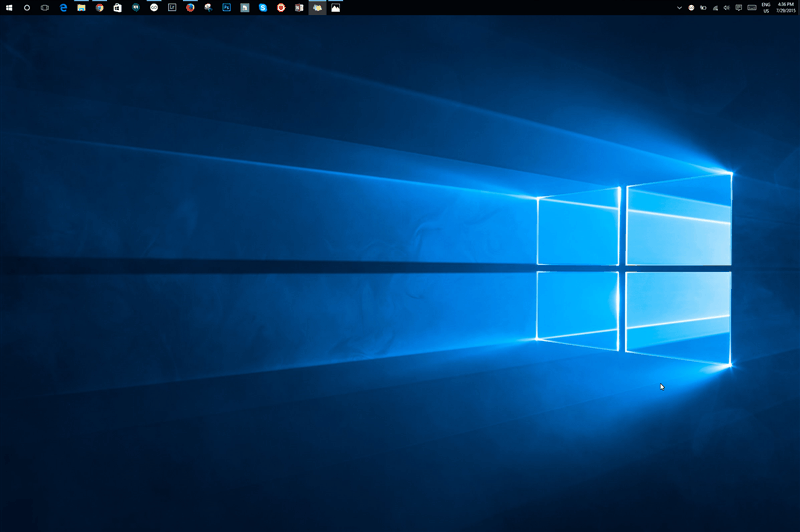
By removing the non-essentials, it works as a great distraction-free working mode; OS X Lion introduced a full screen mode for much the same reason. You can also pick and choose what you want to appear on your taskbar by right-clicking on it while you’re in tablet mode.
Miss the Start Screen from Windows 8? Bring it back
Yes, it may seem like crazy talk, but we’re sure some desktop users liked the full screen app-launcher in Windows 8.
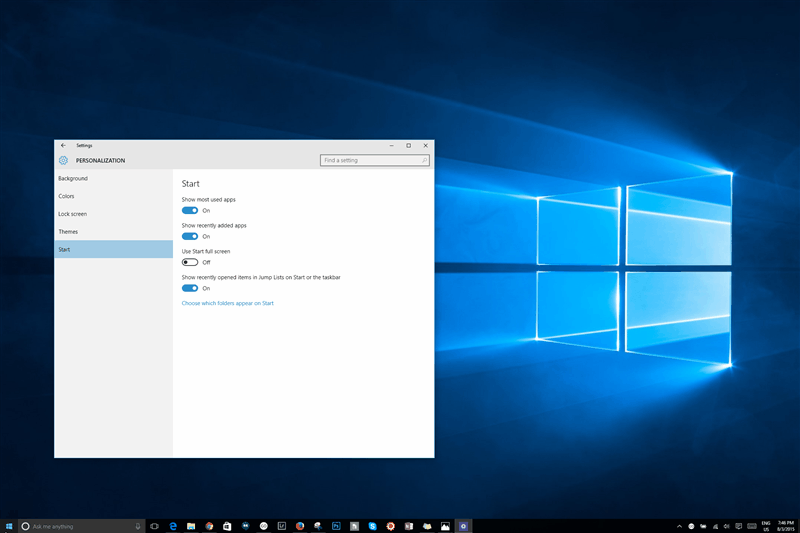
While switching your computer to tablet mode described above will default to the full-screen Start Menu, if you want to keep the look even in desktop mode, you’ll find the option in Settings>Personalization>Start.
Use search for changing settings, calculations and more
Search has been super-powered in Windows 10 thanks to Cortana. Aside from performing your usual assistant actions like setting an alarm or sending messages, and one of the best parts is how easy it is to find new settings. For example, you could’ve just found the right setting for the previous tip by typing “Use Start full screen” instead of clicking through the Settings app. Sorry.

In fact, I rarely peruse through the Settings menu directly anymore, as search is surprisingly good at finding what you’re looking for, even if you don’t type the terms precisely. Typing “change wallpaper,” for instance will bring up the option to “Choose background, slideshow or solid color as your background mode.” It also generally surfaces results before you’re even done typing.
Cortana’s really good at math too, so you never have to open the calculator for quick calculations. Not only can she do the simple stuff like 2+2, she can solve for variables (ex ‘solve 5x+3655 = 50′), although you’re better off just typing those longer entries.
Given Cortana is largely powered by Bing, she’ll likely only get smarter over time – it’s worth trying to discover new features by simply typing your queries right into her search bar.
Personalize Cortana
Cortana is unique among voice assistants in that you’re able to control exactly what data she knows about you.
Her ‘Notebook’ – accessible on the left pane – contains all the information you want Microsoft to keep track of. Don’t care about finance? Turn off stock tickers.
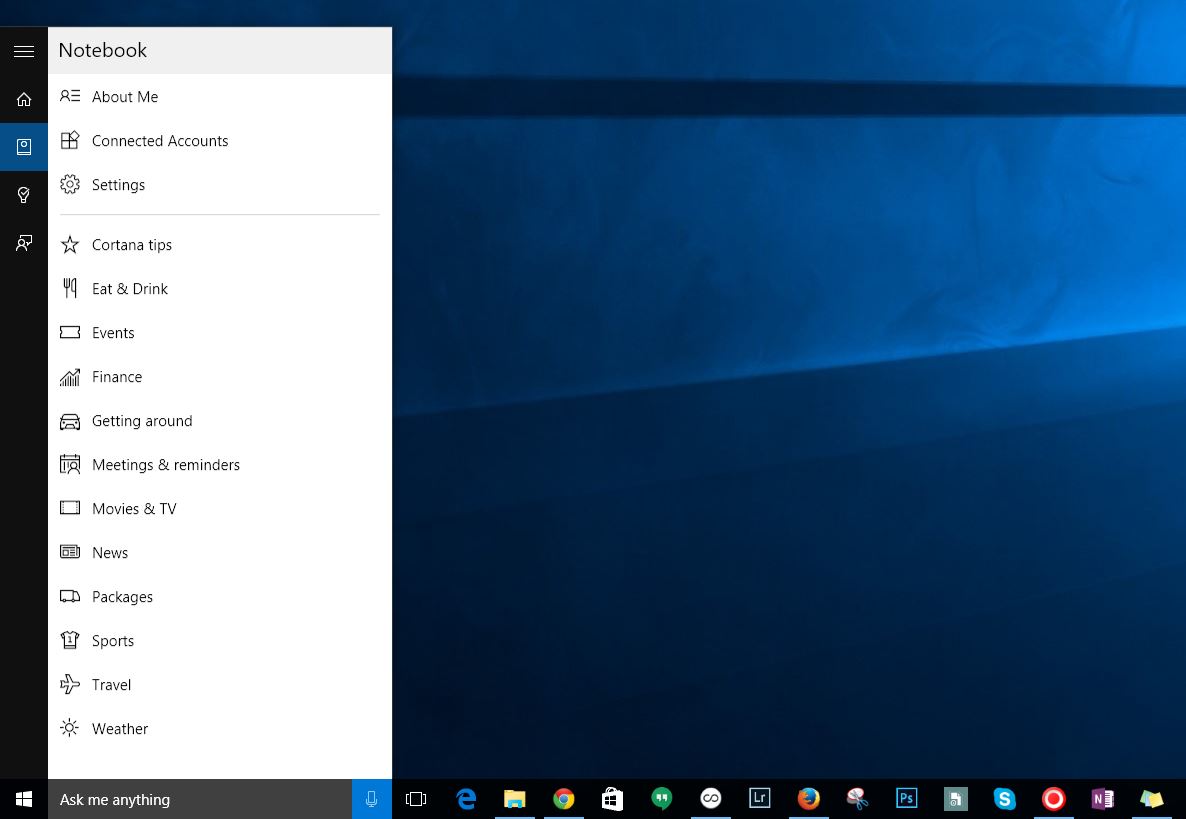
More interestingly perhaps, Cortana lets you directly add information. For instance, instead of having her just arbitrarily guesstimate where you’d like to eat, you can input preferences for anything from cuisine type, to price range, to atmosphere.
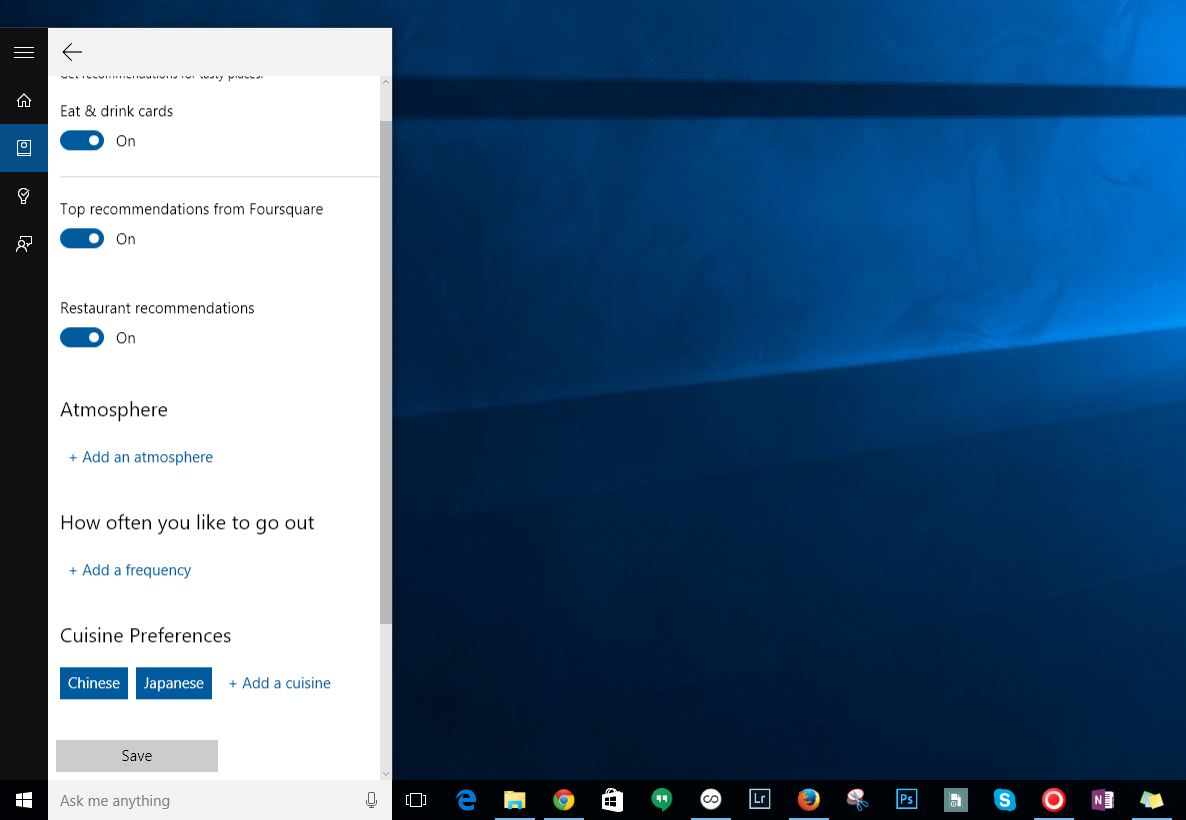
It goes a long way towards making the assistants information cards and search results a lot more useful.
The settings will sync across all your Cortana-enabled devices too – even Android.
Last bit – if you think the new search field embedded onto the taskbar takes up too much space, you can right-click, go to ‘Cortana’ and select to either only display an icon or hide Cortana altogether.
Uninstall programs right from the Start Menu
Just what it sounds like. Right click on any program, be it modern app or legacy windows software, and you’ll see the option to uninstall it right from the Start Menu – finally.
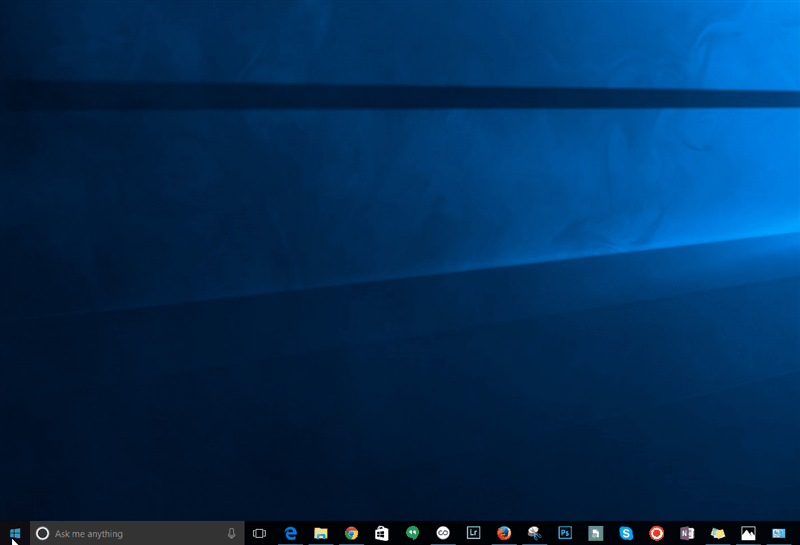
Granted, with legacy apps you still have to go through the classic ‘Add or Remove Programs’ Control Panel screen, but it’s still a nice addition.
Fetch any of your files from another computer using OneDrive
Say you have a lot of important files on your desktop computer, but are going on a trip for a week. With Windows 10, you can enable a feature that will allow you to access any of those files from any computer as long as your desktop is turned on and connected to the Web.
Right click on the OneDrive icon in your notification tray, and click on Settings. You’ll see an option that reads ‘Let me use OneDrive to fetch any of my files on this PC.’ Then simply open OneDrive via the Start Menu to restart the service.

You’ll then be able to access all your files by visiting OneDrive.com and clicking on your computer from the sidebar.
To be clear, this doesn’t just cover your automatically synced OneDrive folders; all the files accessible on your computer are up for grabs, even the ones in shared network folders.
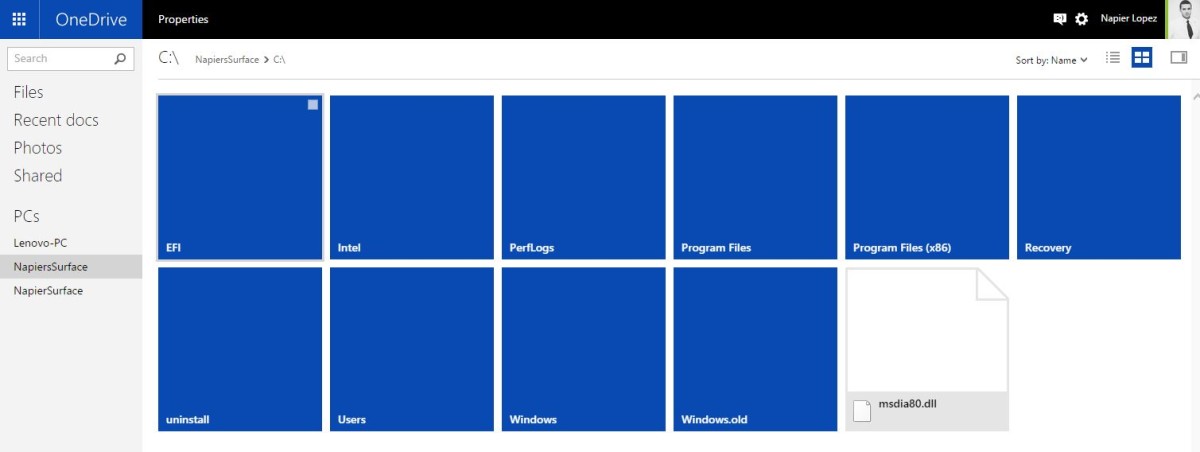


0 comments:
Post a Comment